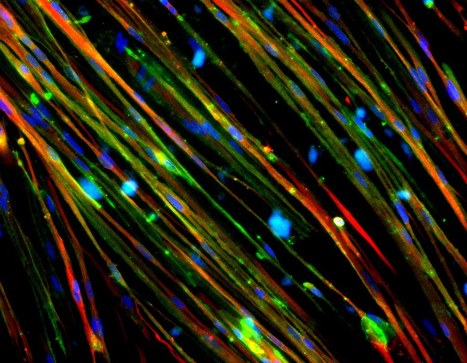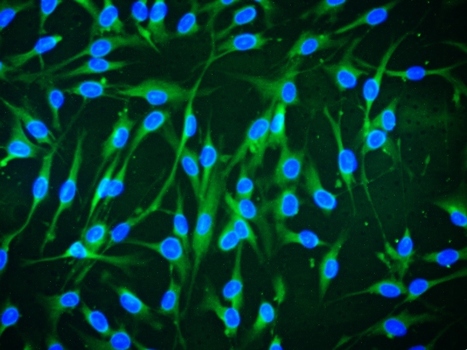Patients with collagen VI-related disorders experience progressive and debilitating disease. New research findings from Spain’s Institut de Recerca Sant Joan de Déu (IRSJD) provides new hope for these diseases, demonstrating the power of CRISPR-Cas9 to silence a dominant negative mutation in patient fibroblasts.
Research and publish the best content.
Get Started for FREE
Sign up with Facebook Sign up with X
I don't have a Facebook or a X account
Already have an account: Login
 Your new post is loading... Your new post is loading...
 Your new post is loading... Your new post is loading...
|
|
































Collagen VI-related dystrophies (COL6-RD) are caused by mutations in the COL6A1, COL6A2 and COL6A3 genes that encode the alpha chains of collagen VI, a key component of the extracellular matrix. The prevalent pathogenic mutation in COL6A1 is a single nucleotide substitution, where a glycine is replaced by an arginine in the N-terminus of the triple helix domain which affects the folding of the resulting protein, hindering the association of tetramers to create the necessary collagen VI microfibrils. Moreover, there is currently no effective treatment available for COL6-RD. However, a recent paper demonstrates the use of CRISPR-Cas9 gene editing to mitigate the pathogenic effects of a dominant negative mutation in the COL6A1 gene. Nevertheless, an obvious hurdle for this type of therapy is the delivery of CRISPR-Cas9 reagents to fibroblasts in vivo; successful editing of somatic tissues such as muscle remains a significant challenge in the broader field. The research team hopes that recent advances in several areas of CRISPR delivery vehicles, including muscle adeno-associated trophic virus vectors and tissue-specific nanoparticles, may be the answer.